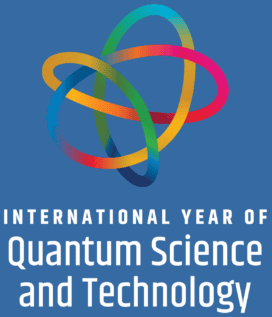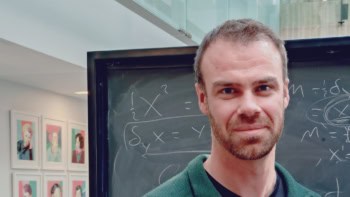Matin Durrani reports from the first day of the Helgoland 2025 meeting, which is a centrepiece of the International Year of Quantum Science and Technology
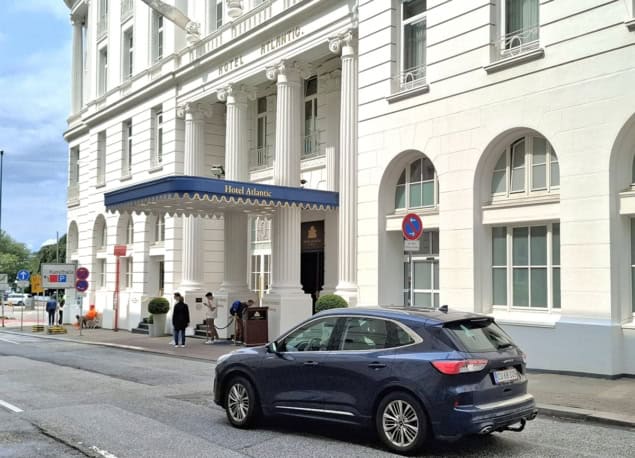
“This is a birthday party! Happy 100th birthday quantum mechanics,” said Jack Harris from Yale University in the US to whoops and cheers in the banqueting suite of the Hotel Atlantic in Hamburg, Germany.
Harris was addressing the 300 or so physicists attending the Helgoland 2025 conference, which is taking place from 9–14 June to mark Werner Heisenberg’s seminal work on quantum mechanics on the island of Helgoland in the North Sea exactly 100 years ago.
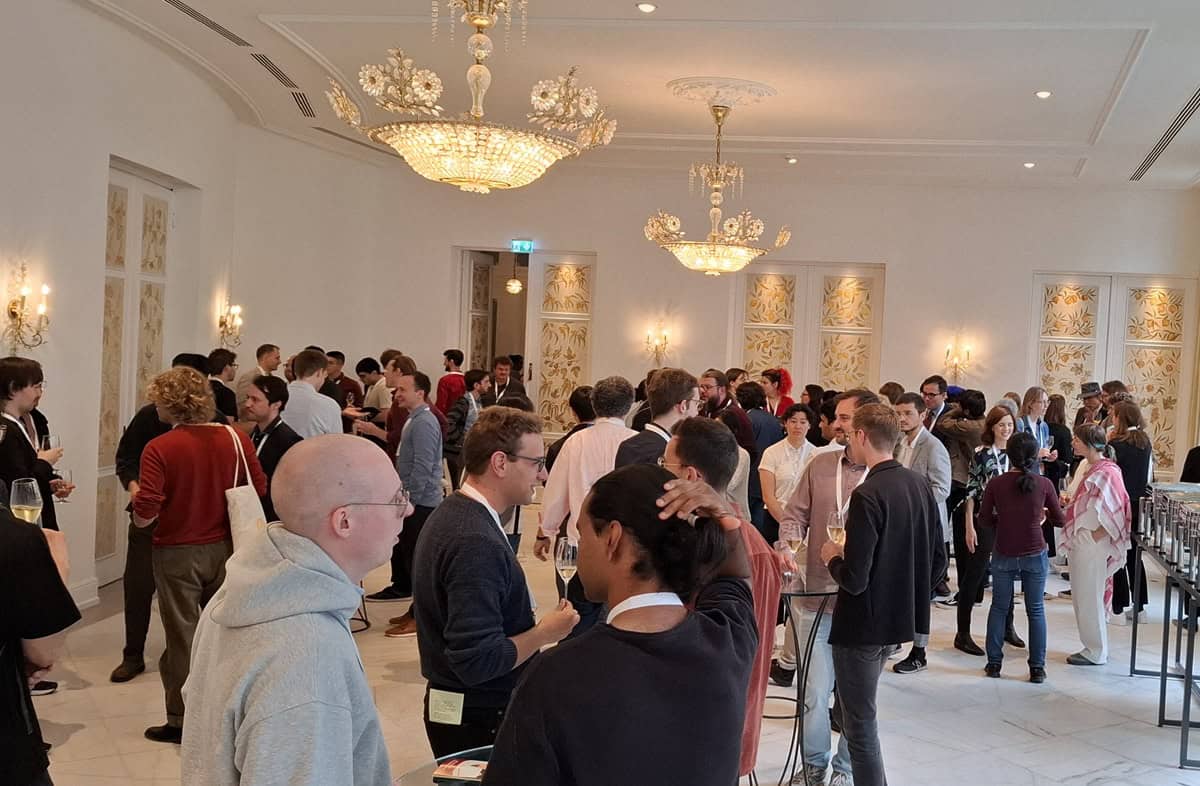
“Heisenberg travelled to Helgoland to escape terrible allergies” Harris told delegates, reminding them of how the young 23-year-old had taken leave of absence from his postdoc supervisor Max Born in Göttingen for the fresh air of the treeless island. “His two weeks there was one of the watershed events in the discovery of quantum mechanics.”
Harris admitted, though, that it’s open to debate if Heisenberg’s fortnight on the island was as significant as is often made out, joking that – like quantum mechanics itself – “there are many interpretations that one can apply to this occasion”.
In one interpretation I hadn’t considered before, Harris pointed out that what might be regarded as an impediment or a disability – Heisenberg’s severe hayfever – turned out to be a positive force for science. “It actually brought him to Helgoland in the first place.”
Harris also took the opportunity to remind the audience of the importance of mentoring and helping each other in science. “How we treat others is as important as what we accomplish”, he said. “Another high standard to keep in mind is that science needs to be international and science needs to be inclusive. I am preaching to the choir but this is important to say out loud.”
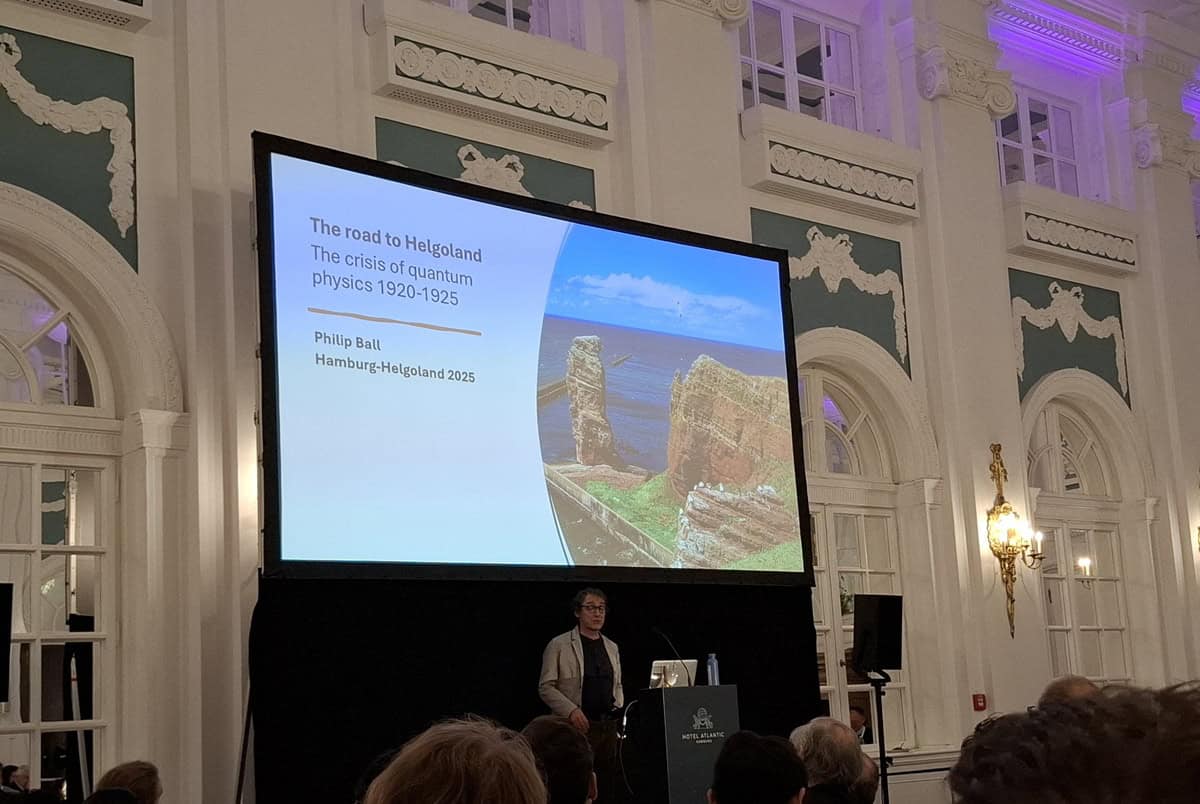
Harris’s opening remarks were followed a series of three talks. First was Douglas Stone from Yale University who discussed the historical development of quantum science.
Next up was philosopher of science Elise Crull from the City University of New York, who looked into some of the early debates about the philosophical implications of quantum physics – including the pioneering contributions of Grete Hermann, who Sidney Perkowitz discussed in his recent feature for Physics World.

Return to Helgoland: celebrating 100 years of quantum mechanics
The final after-dinner speaker was science journalist Philip Ball, who explained how quantum theory developed in 1924–25 in the run-up to Helgoland. He focused, as he did in his recent feature for Physics World, on work carried out by Niels Bohr and others that turned out to be wrong but showed the intense turmoil in physics on the brink of quantum mechanics.
Helgoland 2025 features a packed five days of talks, poster sessions and debates – on the island of Helgoland itself – covering the past, present and future of quantum physics, with five Nobel laureates in attendance. In fact, Harris and his fellow scientific co-organizers – Časlav Brukner, Steven Girvin and Florian Marquardt – had so much to squeeze in that they could easily have “filled two or three solid programmes with people from whom we would have loved to hear”.
I’ll see over the next few days on Helgoland if they made the right speaker choices, but things have certainly got off to a good start.
• Elise Crull is appearing on the next episode of Physics World Live on Tueday 17 June. You can register for free at this link.
This article forms part of Physics World‘s contribution to the 2025 International Year of Quantum Science and Technology (IYQ), which aims to raise global awareness of quantum physics and its applications.
Stayed tuned to Physics World and our international partners throughout the next 12 months for more coverage of the IYQ.
Find out more on our quantum channel.
